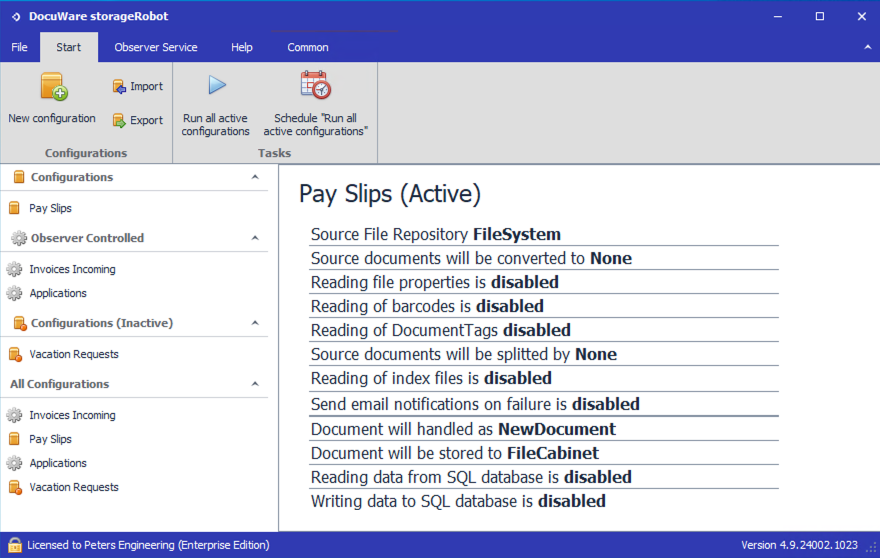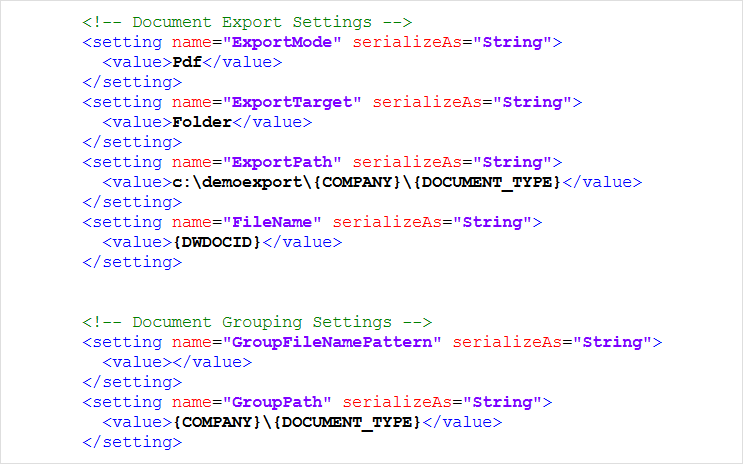DocuWare storageRobot
Component: DocuWare storageRobot
With storageRobot, DocuWare expands its portfolio with a module for very special or complex scenarios when importing documents into DocuWare document trays and file cabinets. Many ERP and merchandise management systems generate outgoing documents, journals and lists as finished files. Storing these files can pose special challenges due to the source, database query options or index file formats. storageRobot helps you to handle these use cases in a flexible way.
Applications
You use Intelligent Indexing for your document tray and can now automatically store documents recognized as "green" meaning reliable.
The index data can be conveniently read directly from a database using SQL when importing your documents into DocuWare.
Receive documents in ZIP format and automatically save the associated files as individual documents, which are also processed individually.
Benefits
Document tray, file cabinet or FTP as sources
File cabinets, document trays and file system folders as targets
Processing of index files in XML, CSV, TXT formats
Reading and writing back SQL
Here's how

The start interface of storageRobot shows the configurations overview.
An additional license is required for both DocuWare Cloud and locally installed systems. You can find more information about the new module in the DocuWare storageRobot Product Info.
DocuWare docXporter
Component: DocuWare docXporter
With docXporter, you can export documents, index data or both automatically from DocuWare file cabinets to your file system, for example, to make them available for external systems. The flexible output structure and filter options for documents and data allow you to map the most complex scenarios.
Applications
Export the digital receipts of a day as PDFs for provision to a third-party system. DocuWare stamps and annotations, such as those indicating cost centers, are included for your tax consulting. Documents consisting of multiple files can be exported as a ZIP archive.
To make documents available in a folder structure, you define the structure using the archive's index terms. This allows you to export documents to subfolders such as <customer> or <document type>. You also define the filenames as a combination of fixed values and the document's index data.
As a cloud customer, you can create local backups of all or selected documents, in addition to cloud backups, if needed.
Benefits
Export documents and/or index data
Export of documents as PDF, TIFF or ZIP
Structured output
Flexible filter options
Logging of activities
Here's how

docXporter is configured via an XML file, which you adapt to your processes on predefined parameters and values.
An additional license is required for both DocuWare Cloud and locally installed systems. For more information, see ProductInfo DocuWare docXporter.